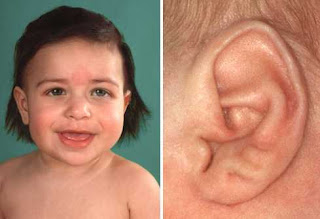Walnuts Appear to Improve Semen Quality in Healthy Men
Journalist
Joe Barber Jr., PhD
Joe Barber Jr., PhD, is a freelance writer for Medscape
August 28, 2012 — The daily addition of 75 g of whole-shelled walnuts to a typical Western-style diet appears to have positive effects on the vitality, morphology, and motility of sperm in healthy men, according to the findings of a randomized, parallel, 2-group, dietary intervention trial.
Wendie A. Robbins, PhD, and colleagues from the University of California, Los Angeles, published their findings online August 15 in Biology of Reproduction.
The authors note that despite the connection between food and reproduction throughout history, the evidence of the effects of diet on male fertility is lacking. "Dietary habits and essential nutrients to promote successful reproductive outcomes have been identified for the maternal peri-conceptional and peri-natal period, but healthy dietary habits and essential nutrients for paternal reproductive fitness are less clear," the authors write.
"Evidence is particularly limited for men who routinely consume Western-style diets that may lack optimal nutrients and [polyunsaturated fatty acid] profiles needed for healthy sperm and fertility," they continue.
Via flyers posted on campus, the authors recruited 120 healthy men between the ages of 21 and 35 years who routinely consumed a Western diet, 3 of whom only participated in a pilot trial. After randomly assigning the remaining 117 participants to the control (no dietary supplementation, n = 58) and walnut supplementation (n = 59) groups for a 12-week trial, the authors revealed that sperm vitality (difference after 12 weeks, 5.5% ± 10.0% vs 0.51% ± 7.4% in walnut vs control groups, respectively; P = .003), motility (difference after 12 weeks, 5.7% ± 13.4% vs 0.53% ± 10.4, respectively; P = .009), and morphology (normal forms: difference at 12 weeks, 1.1% ± 2.7% vs 0.1 ± 2.3, respectively; P = .03) were significantly improved in the walnut group compared with the control group.
The authors excluded men with known food allergies, histories of reproductive disorders or vasectomies, current smoking habits, or current usage of antioxidant supplements, medications for chronic illnesses, or illicit drugs.
In addition, serum omega-3 and omega-6 fatty acid levels were significantly improved in the walnut group after 12 weeks (P = .0007 and .0004, respectively), although no differences were observed in sperm fatty acid levels after 12 weeks of walnut supplementation.
The prevalence of sex chromosome disomy and sperm missing a sex chromosome were significantly lower in the walnut group after 12 weeks of supplementation (P = .002 and .01, respectively). Sperm α-linolenic acid levels were inversely correlated with the proportion of sperm missing a sex chromosome (Spearman correlation coefficient, −0.41; P = .002)
No differences were observed between the baseline characteristics of the control and walnut groups, excluding lower follicle-stimulating hormone levels in the walnut group (P = .04). The limitations of the study included the collection of blood samples only during daytime, preventing evaluation of the effects of diurnal variations in sex hormone levels.
Would Sperm Improvements From Walnuts Persist for Infertile Men?
The authors noted that this study could not clarify whether the effects observed in healthy adults will be applicable to those with fertility issues. "Whether adding walnuts to the diet will go beyond the shifts in sperm parameters as seen in this study to improving birth outcomes for men within fertility clinic populations or in the general population is not yet known and will require further research," the authors write.
Dolores Lamb, PhD, director of the Center for Reproductive Medicine at Baylor College of Medicine in Houston, Texas, and current president of the American Society for Reproductive Medicine, noted that walnut supplementation may represent a useful strategy for some men with fertility problems.
"Importantly, if indeed subsequent studies show improvement in fertility potential, this is a simple dietary intervention that could be easily recommended for men with sperm deficiencies caused by poor viability, poor morphology (for some specific defects), and lowered motility," Dr. Lamb told Medscape Medical News by email.
"While there is no doubt that many men with abnormal morphology, vitality, or motility would not be helped by this intervention because of the clearly multifactorial basis of male infertility, nevertheless, if a subset of infertile men can be helped, this would be a positive advance," she concluded.
This study was funded through a grant from the California Walnut Commission. Dr. Lamb has received grant support from the National Institutes of Health and from the William and Ella Owens Medical Research Foundation.



Comentarios
Publicar un comentario